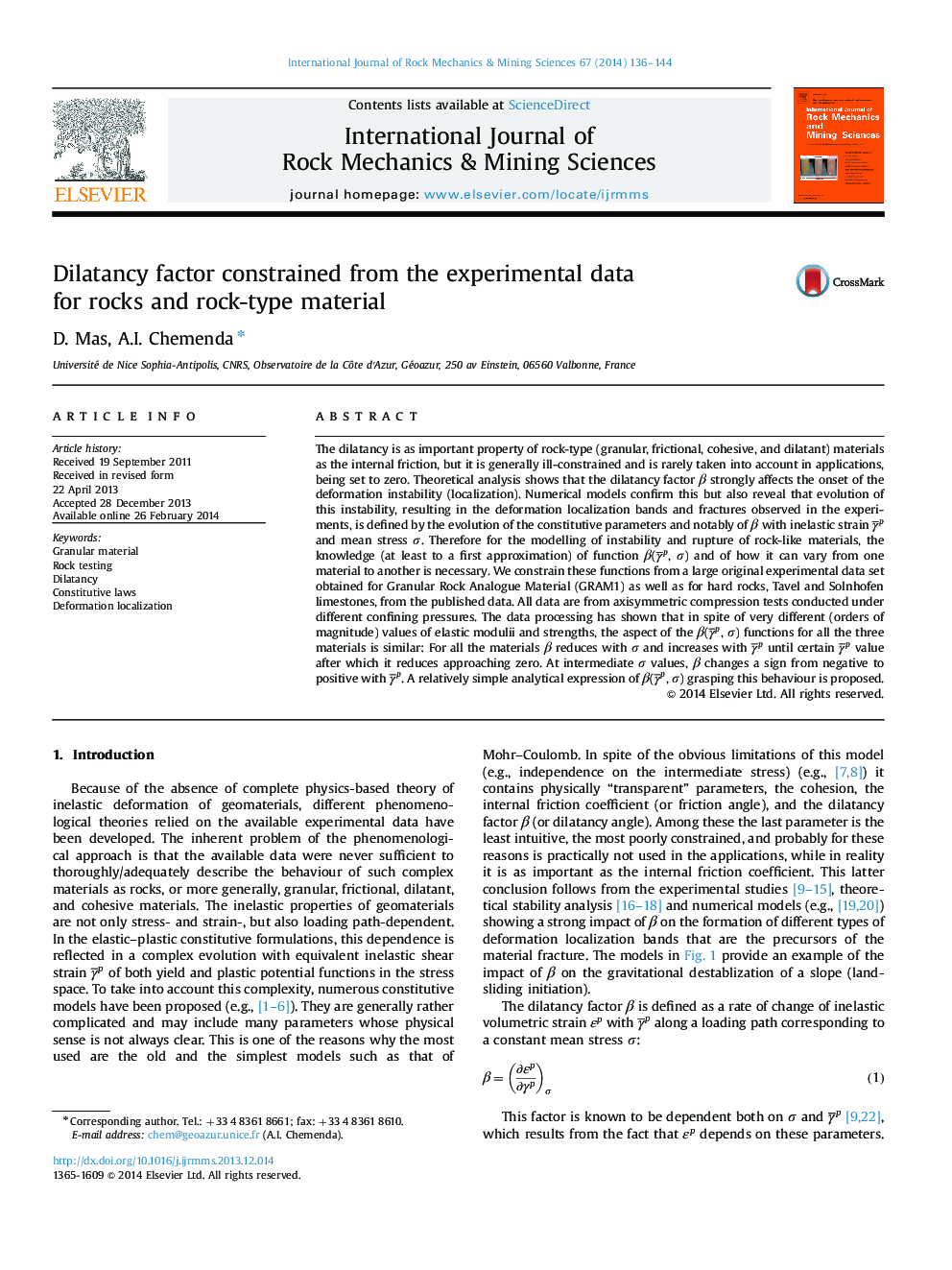| Article ID | Journal | Published Year | Pages | File Type |
|---|---|---|---|---|
| 809599 | International Journal of Rock Mechanics and Mining Sciences | 2014 | 9 Pages |
•Mechanical data for GRAM1, Tavel, and Solnhofen limestones were processed.•GRAM1 is a synthetic rock-like material, 2 orders of magnitude weaker than rocks.•Evolution of the dilatancy factor β with inelastic strain and pressure was determined.•β strongly depends on these parameters and evolves similar for all the materials.
The dilatancy is as important property of rock-type (granular, frictional, cohesive, and dilatant) materials as the internal friction, but it is generally ill-constrained and is rarely taken into account in applications, being set to zero. Theoretical analysis shows that the dilatancy factor β strongly affects the onset of the deformation instability (localization). Numerical models confirm this but also reveal that evolution of this instability, resulting in the deformation localization bands and fractures observed in the experiments, is defined by the evolution of the constitutive parameters and notably of β with inelastic strain γ¯p and mean stress σ. Therefore for the modelling of instability and rupture of rock-like materials, the knowledge (at least to a first approximation) of function β (γ¯p, σ) and of how it can vary from one material to another is necessary. We constrain these functions from a large original experimental data set obtained for Granular Rock Analogue Material (GRAM1) as well as for hard rocks, Tavel and Solnhofen limestones, from the published data. All data are from axisymmetric compression tests conducted under different confining pressures. The data processing has shown that in spite of very different (orders of magnitude) values of elastic modulii and strengths, the aspect of the β (γ¯p, σ) functions for all the three materials is similar: For all the materials β reduces with σ and increases with γ¯p until certain γ¯p value after which it reduces approaching zero. At intermediate σ values, β changes a sign from negative to positive with γ¯p. A relatively simple analytical expression of β (γ¯p, σ) grasping this behaviour is proposed.
